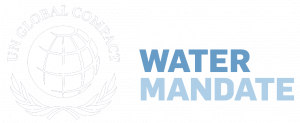Internal water stewardship champions: practitioners within an organization, at a corporate, regional, business, or site level, responsible for delivering corporate water stewardship commitments and programs and supporting others within the organization with water stewardship target implementation, measurement, and reporting.
Shared water challenge: A water-related issue, concern, or threat shared by the site and one or more stakeholders within the catchment(s). Examples include physical water scarcity, deteriorating water quality, and regulatory restrictions on water allocation (AWS 2019).
Site’s physical scope: The land area relevant to the site’s water stewardship actions and engagement. It should incorporate the relevant catchment(s) but may extend to relevant political or administrative boundaries. It is typically centered on the site but may include separate areas where the origin of water supply is more distant (AWS 2019).
Site: the site is the physical area over which the implementing organization owns or manages land and carries out its principal activities. In most cases, a site will be a contiguous area of land, but may also include areas that are physically separated but nearby (especially if in the same catchment). For a factory, the “site” is typically represented by the fenced area encompassing all its buildings, parking, and storage areas. If the organization operates its own water sources or wastewater plant (or both), these should be considered part of the site. For example, for a bottled water factory that operates a physically separate water source (e.g., a spring or borehole), the source should be considered part of the site (AWS 2019).
Volumetric Water Benefit Accounting: provides corporate water stewardship practitioners with a standardized approach and set of indicators to quantify and communicate the volumetric water benefits, complementary indicators to measure nonvolumetric outputs, and elements of effective water stewardship activities that increase the likelihood of generating social, economic, and environmental benefits and solving shared water challenges (Reig et al. 2019).
Volumetric water benefits: the volume of water resulting from water stewardship activities, relative to a unit of time, that modifies the hydrology in a beneficial way or helps to reduce shared water challenges, improve water stewardship outcomes, or meet the targets of Sustainable Development Goal 6 (SDG 6) (Reig et al. 2019).
Water replenishment: the act of returning a volume of water to a site’s local catchment areas in ways that address the local water challenges shared by local communities and stakeholders; align with leading practice for corporate water stewardship; are informed by the best available information and catchment context; and have a measurable and positive impact on the catchment’s water availability, quality, and accessibility.
